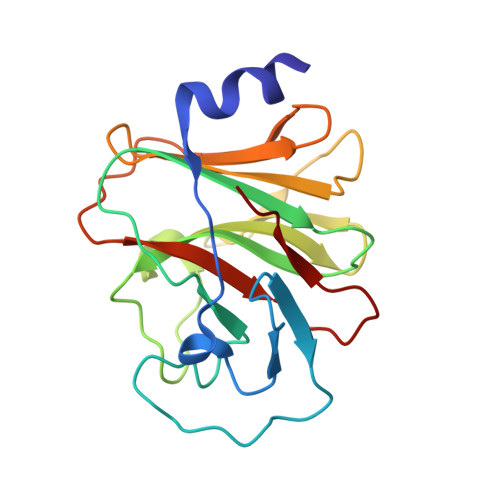BTN3A1 Discriminates gamma delta T Cell Phosphoantigens from Nonantigenic Small Molecules via a Conformational Sensor in Its B30.2 Domain.
Salim, M., Knowles, T.J., Baker, A.T., Davey, M.S., Jeeves, M., Sridhar, P., Wilkie, J., Willcox, C.R., Kadri, H., Taher, T.E., Vantourout, P., Hayday, A., Mehellou, Y., Mohammed, F., Willcox, B.E.(2017) ACS Chem Biol 12: 2631-2643
- PubMed: 28862425
- DOI: https://doi.org/10.1021/acschembio.7b00694
- Primary Citation of Related Structures:
5LYG, 5LYK - PubMed Abstract:
Human Vγ9/Vδ2 T-cells detect tumor cells and microbial infections by recognizing small phosphorylated prenyl metabolites termed phosphoantigens (P-Ag). The type-1 transmembrane protein Butyrophilin 3A1 (BTN3A1) is critical to the P-Ag-mediated activation of Vγ9/Vδ2 T-cells; however, the molecular mechanisms involved in BTN3A1-mediated metabolite sensing are unclear, including how P-Ag's are discriminated from nonantigenic small molecules. Here, we utilized NMR and X-ray crystallography to probe P-Ag sensing by BTN3A1. Whereas the BTN3A1 immunoglobulin variable domain failed to bind P-Ag, the intracellular B30.2 domain bound a range of negatively charged small molecules, including P-Ag, in a positively charged surface pocket. However, NMR chemical shift perturbations indicated BTN3A1 discriminated P-Ag from nonantigenic small molecules by their ability to induce a specific conformational change in the B30.2 domain that propagated from the P-Ag binding site to distal parts of the domain. These results suggest BTN3A1 selectively detects P-Ag intracellularly via a conformational antigenic sensor in its B30.2 domain and have implications for rational design of antigens for Vγ9/Vδ2-based T-cell immunotherapies.
Organizational Affiliation:
Institute of Immunology and Immunotherapy, University of Birmingham , Edgbaston, Birmingham, United Kingdom , B15 2TT.




















